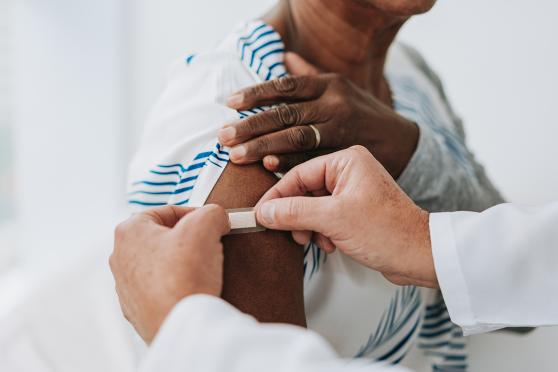Considering orthopedic surgery? 5 things to know
Make an informed decision about surgery and get on the road to recovery faster with these tips.

If you’re contemplating a knee or hip replacement, spinal fusion, or another orthopedic surgery in the near future, you’re not alone. More than 1.5 million orthopedic surgeries take place each year in the United States. Despite how frequently they occur, orthopedic procedures are just a single treatment option for people experiencing pain in the knees, hips, back, or another joint. In fact, there are several less-invasive options available to patients.
Here, we outline what those options are, in addition to what an orthopedic surgery (and its recovery) might look like if you do opt to undergo a procedure.
#1: Your surgeon will likely recommend nonsurgical therapies first. No matter where your pain is located, it’s likely that your doctor will want you to try other approaches before opting for surgery. Some of these treatments take place outside of a doctor’s office, like establishing a regular exercise routine, resting at home after an injury or flare-up, and taking pain relievers such as nonsteroidal anti-inflammatory drugs. Your doctor might also prescribe injections, physical therapy, and strengthening exercises to help relieve pain. If those approaches don’t relieve symptoms within four to six weeks, your doctor may then recommend surgery.
#2: “Prehab” for better post-op recovery. Of all those nonsurgical treatment options for knee, back, and joint pain, physical therapy is typically the most prescribed––and the most effective. And it can even help speed up recovery if you do opt to undergo surgery. In one recent study published in theJournal of Bone & Joint Surgery, people who had an average of just one or two physical therapy sessions before hip or knee replacement needed 30 percent less post-op care, which includes rehabilitation in a nursing center or from a home-health agency. Prehab can also help train you to use devices that might help you walk after surgery. It may improve pain in the weeks after your procedure, too.
#3: Be open to non-drug options for recovering after surgery. Just because your prescription doesn’t come in a pill form doesn’t mean it won’t be effective. Many non-drug therapies, including simple relaxation, guided imagery, acupuncture, and transcutaneous electrical nerve stimulation (TENS), have proven to be equally as effective in making the recovery process more comfortable as opioid medications. In a recent Stanford University study of people who underwent a total knee replacement, those who received acupuncture or TENS therapy needed fewer opioids or used them later in their care.
#4: Watch for warning signs of deep vein thrombosis. Like any major surgery, orthopedic procedures can come with complications. And for older patients, blood clots tend to be the most common. If left untreated, these clots can travel from the veins in your limbs to your lungs, blocking blood flow to major organs. Fortunately, these can most often be prevented with lower-leg exercises prescribed by your doctor, keeping your legs elevated, wearing special support socks, or even taking medication to lower risk in the weeks after your procedure. Call your doctor right away if you notice new swelling, tenderness, redness, or pain in your legs, and call 911 if you feel short of breath or have chest pain—these can all be signs of a blood clot in the lungs.
#5: Get moving after your procedure. Your body might not be primed to run five miles following a procedure, but that doesn’t mean exercise should be avoided altogether post-op. Your surgeon may recommend an at-home routine or one that you can do in a pool with a physical therapist.


